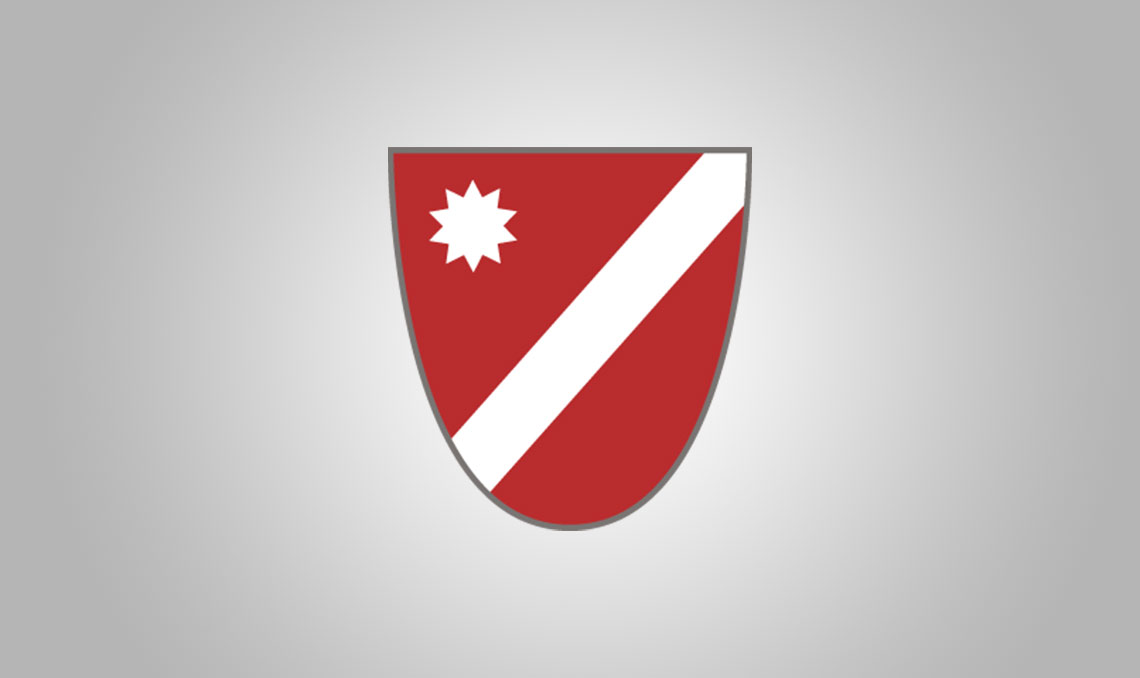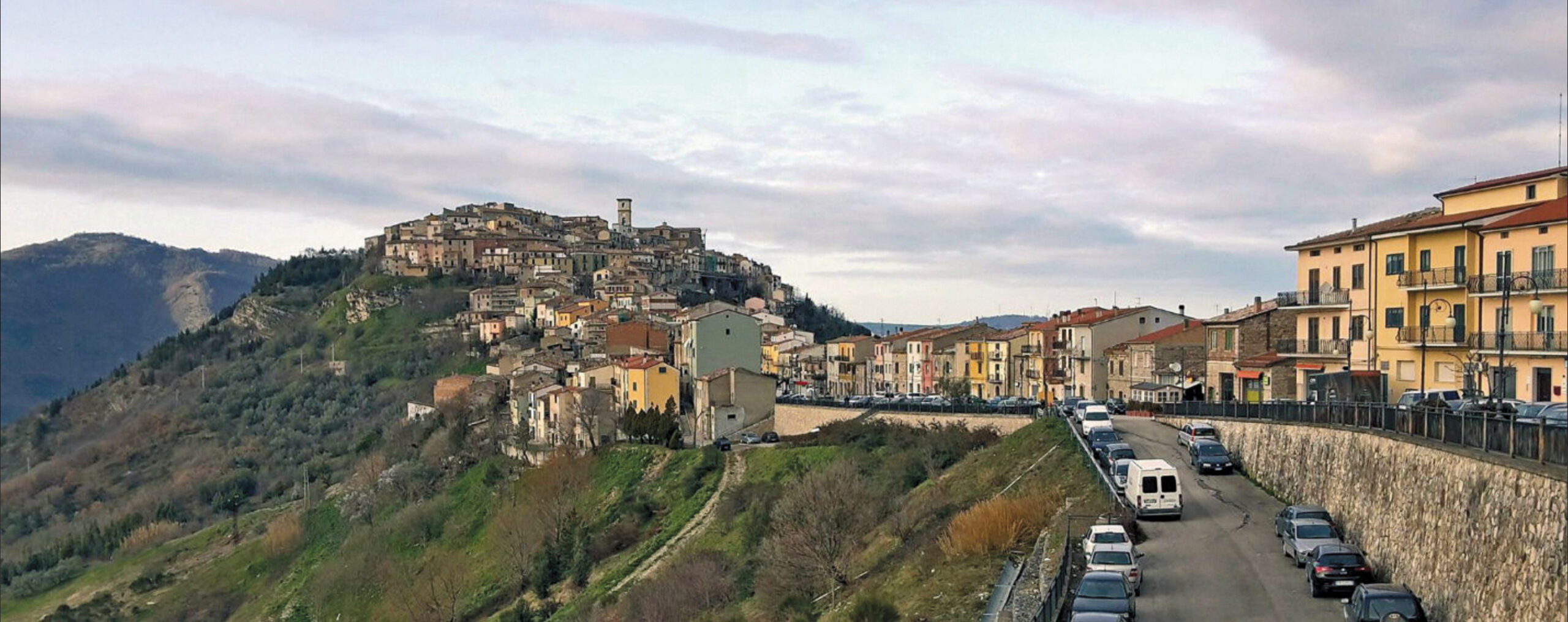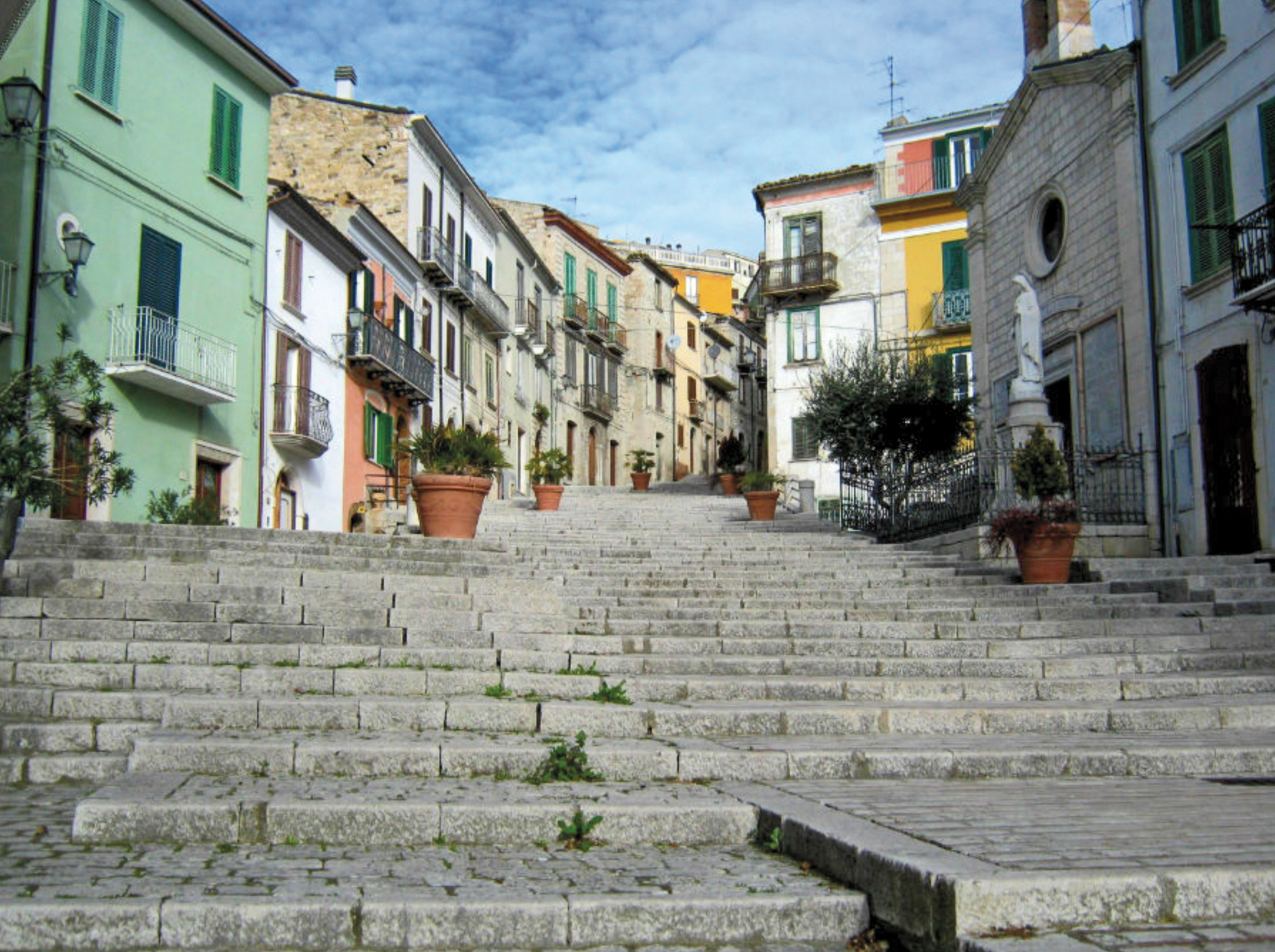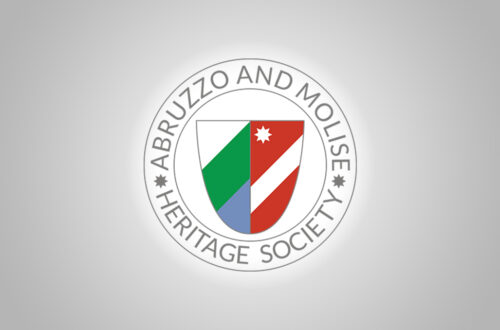
Trivento

By Nancy DeSanti

Credit: Trivento | Marco Pirulli
Province of Campobasso, Region of Molise
The town of Trivento is located on the border with Abruzzo in the Trigno Valley, perched on a hill about 25 kilometers northwest of Campobasso. It has approximately 4,663 inhabitants, known as Trevintini. It is surrounded by territory dotted with larch woods, oak groves and rock formations called morge, part of the Parco delle Morge Cenozoiche del Molise.
One of the larger towns in Molise, Trivento rises on a rocky spur dominating the surrounding plains and hills from where it is possible to enjoy a magnificent view, from the southern coast of Abruzzo down to the Gargano and Tremiti islands.
Its church of Sts. Nazario, Celso e Vittore is the cathedral called the Episcopal See of the Roman Catholic Diocese of Trivento. It was built with re-used Roman stones and column capitals on a pagan altar possibly dedicated to the goddess Diana. In early Christian times, a crypt was built on the spot in honor of San Casto, the first bishop of Trivento who started to convert the local Samnite population to Christianity. Most of the architecture is typical Romanesque.
The Trivento name refers to the geographical position of the village in Molise, exposed to winds from the east, south and north. An inscription in a Roman stone found in the cathedral crypt showed that the ancient name was Terventi. An important center of the Samnites, it was destroyed during the 3rd century wars of the Samnites against Rome, and the Romans repopulated it with the Voltinia tribe.
Under the Normans, the fiefdom of Trivento was ruled by numerous seigniories, including the Caldara and the Angevin, which followed one another in occupying the Ducal Castle dating back to the 13th century. The Ducal Castle has high walls, with an irregular plan, and two main entrances. The interior has been modified over the centuries, and the underground part is spartan because it was used in the past as a prison while the piano nobile preserves a hall with frescoes.
In recent decades in the surrounding countryside, there have been over 50 farms, an impressive growth of biological agriculture (farro, olives, cereals), which should have a great future in Molise whose soil is almost unexploited due to the very low population density, and unpolluted, thanks to the lack of industrial development.
Trivento is known for its long staircase, the Scalinata di San Nicola (St Nicholas’ Staircase) with 365 steps, one for each day of the year. The Scalinata di San Nicola is the symbol of the town and was built in three lanes of white limestone. The 365 steps connect the lower part of the village to the upper part called Piano.
Along the slope of the staircase are craft shops displaying crochet work, one of Trivento’s typical features. Beginning in 2018, Lucia Santorelli, in collaboration with the whole town, created a crocheted carpet so long that it covered the entire San Nicola staircase. This charitable initiative aroused worldwide interest. During Advent of the same year, a large Christmas tree made of hundreds of crocheted doilies was erected in Trivento’s Piazza Fontana, making it look like a colorful mosaic.
For this reason, Trivento is now considered the Crochet Capital. In 2019, Trivento hosted the first edition of the Yarn Bombing Day event. Artists and crochet enthusiasts from all over the world came to Trivento to make their crochet crafts. Each item was then exhibited in a path that led from Piazza Fontana to the heart of the historic center.
One of the best times to visit Trivento may be in September, during the Sagra dello zapp’ttone e dei cavatelli. These are two typical Trivento dishes, the first based on lamb livers and veal tripe, while the second is the classic fresh pasta served with broccoli or cardoncelli mushrooms.
What to See
- Scalinata di San Nicola
- The Palazzo Colaneri near the cathedral, a typical Renaissance mansion.
- The Cathedral of SS. Nazario, Celso and Vittore, with a baptismal fountain of the 4th century and a crypt to San Casto, Martyr.
Important Dates
- July 28 – Feast of St. Nazario, the patron saint
- September – Sagra dello zapp’ttone e dei cavatelli
Italiano
Trivento

Tradotto da Ennio Di Tullio

Credit: Trivento | Pro Loco Terventum
Provincia di Campobasso, Regione Molise
Il comune di Trivento si trova al confine con l’Abruzzo nella Valle del Trigno, arroccato su un colle a circa 25 chilometri a nord ovest di Campobasso. Conta circa 4.663 abitanti, conosciuti come Trevintini. È circondato da un territorio costellato di boschi di larici, querceti e formazioni rocciose dette morge, facenti parte del Parco delle Morge Cenozoiche del Molise.
Tra i centri più grandi del Molise, Trivento sorge su uno sperone roccioso che domina la pianura e le colline circostanti da dove è possibile godere di un magnifico panorama, dalla costa meridionale dell’Abruzzo fino al Gargano e alle Isole Tremiti.
La sua chiesa dei SS. Nazario, Celso e Vittore è la sede vescovile della cattedrale della diocesi cattolica di Trivento. Fu costruito con pietre romane di riutilizzo e capitelli di colonne, su un altare pagano forse dedicato alla dea Diana. Poi in epoca paleocristiana sul posto fu costruita una cripta in onore di San Casto, primo vescovo di Trivento che iniziò a convertire al cristianesimo la popolazione sannita locale. La maggior parte dell’architettura è tipicamente romanica.
Il nome Trivento si riferisce alla posizione geografica del paese molisano, esposto ai venti provenienti da est, sud e nord. Un’iscrizione in una pietra romana rinvenuta nella cripta della cattedrale mostrava che l’antico nome era Terventi. Importante centro dei Sanniti, fu distrutto durante le guerre dei Sanniti contro Roma del III secolo, e i Romani lo ripopolarono con la tribù Voltinia.
Sotto i Normanni il feudo di Trivento fu retto da numerose signorie, tra cui i Caldara e gli Angioini, che si susseguirono occupando il Castello Ducale risalente al XIII secolo. Il Castello Ducale presenta alte mura, a pianta irregolare, e due ingressi principali. L’interno è stato modificato nel corso dei secoli, e la parte sotterranea è spartana perché usata in passato come prigione mentre il piano nobile conserva un salone affrescato.
Negli ultimi decenni nelle campagne circostanti si sono registrate oltre 50 aziende agricole, una crescita impressionante dell’agricoltura biologica (farro, olivo, cereali), che dovrebbe avere un grande futuro in Molise il cui suolo è quasi inutilizzato per la bassissima densità abitativa, e incontaminata, grazie al mancato di sviluppo industriale.
Trivento è noto per la sua lunga scalinata, La Scalinata di San Nicola, con 365 gradini, un gradino per tutti i giorni dell’anno (365). La Scalinata di San Nicola è il simbolo del Trivento ed è stata costruita su tre corsie di calcare bianco. I 365 gradini collegano la parte bassa del paese alla parte alta denominata Piano.
Lungo il pendio della scalinata si trovano botteghe artigiane che espongono il lavoro all’uncinetto, una delle caratteristiche tipiche del Trivento. A partire dal 2018 Lucia Santorelli, in collaborazione con tutto il comune, ha realizzato un tappeto all’uncinetto così lungo da coprire l’intera scalinata di San Nicola. Questa iniziativa di beneficenza ha suscitato interesse in tutto il mondo. Durante l’Avvento dello stesso anno, in Piazza Fontana del Trivento, fu eretto un grande albero di Natale composto da centinaia di centrini all’uncinetto, che sembrava un mosaico colorato.
Per questo Trivento è ormai considerata la Capitale dell’Uncinetto. Nel 2019 Trivento ha ospitato la prima edizione dell’evento Yarn Bombing Day. Artisti e appassionati di uncinetto da tutto il mondo sono venuti a Trivento per realizzare i loro lavori all’uncinetto. Ogni pezzo è stato poi esposto in un percorso che da piazza Fontana portava nel cuore del centro storico.
Uno dei periodi migliori per visitare Trivento potrebbe essere settembre, durante la Sagra dello zapp’ttone e dei cavatelli. Si tratta di due piatti tipici del Trivento, il primo a base di fegatini di agnello e trippa di vitello, mentre il secondo è la classica pasta fresca servita con broccoli o funghi cardoncelli.
Le attrazioni del luogo:
- Scalinata di San Nicola
- Il Palazzo Colaneri vicino alla cattedrale, tipico palazzo rinascimentale.
- La Cattedrale dei SS. Nazario, Celso e Vittore, con una fontana battesimale del IV secolo e una cripta a San Casto, Martire.
Date da ricordare:
- 28 luglio – Festa di San Nazario, patrono
- Settembre – Sagra dello zapp’ttone e dei cavatelli
| Sources: |
| https://en.wikipedia.org/wiki/Trivento https://www.italyheritage.com/regions/molise/province-campobasso/trivento.htm https://www.e-borghi.com/en/village/Campobasso/317/trivento |
July/August 2022





